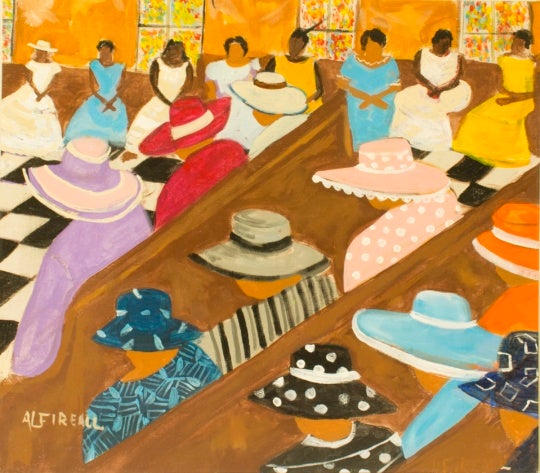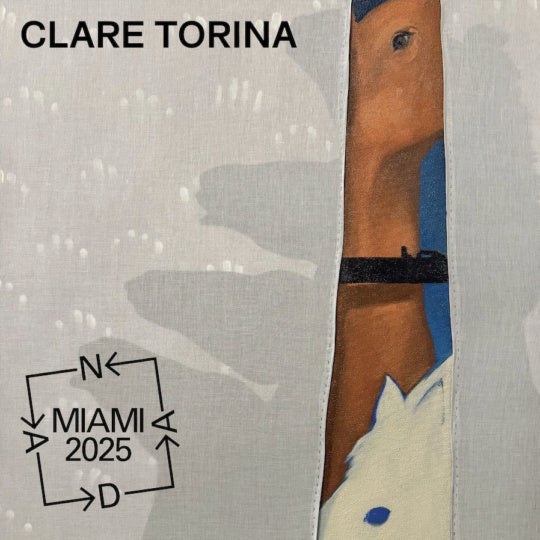
Morrisa Maltz’s documentary Ingrid is an utterly unexpected, even radical take on old age, defying expectations at every turn.
Extreme self-sufficiency, DIY badassery, frank loneliness and off-the-leash creativity define the life of Ingrid Gipson, a Dallas wife, and mother who chucked it all decades ago to live a drastically different reality, cut off from creature comforts and the family she once knew.
Today, at age 74, Gipson lives essentially off the grid—except for occasional forays into her rural Hodgen, Oklahoma, town for goat antibiotics and gasoline. Far from her Texas home, Ingrid lives alone on an isolated plot of land in the Oklahoma forest, estranged from her children and even other human beings.
In an America where cowboys and musicians, Silicon Valley bros and outspoken billionaires are variously fêted as mavericks and radicals, Ingrid is a tribute to a genuine iconoclast. An artist whose freedom comes at great personal cost, Ingrid has shed her skin and remade herself as a new person, living life on her own terms.

Director Maltz, who studied fine art at Columbia University, initially retains a fair amount of mystery around Ingrid. Her film begins in medias res with Ingrid in the present, engaging in a shocking diversity of tasks: single-handedly loading large rocks (purloined illegally from a national forest she admits, with a mischievous smile) into her red pickup truck to expand on her home, quilt-making, sculpting a curvaceous female bust in clay, animal tending and, in her infrequent downtime, musing for Maltz’s camera on the twinned loneliness and sense of contentment in the solitary life she has chosen for herself. Midwife to a goat, Ingrid is shown sweetly talking the animal through her labor. A grandmotherly executioner, in one interlude Ingrid plucks from its hutch and then gently calms one of her rabbits, stroking the animal until its heart stops racing and its panic subsides, so she can kill it mercifully. “I really enjoy raising my own food,” Ingrid says. “I don’t enjoy killing rabbits,” she admits of the complicated truth of her close-to-nature existence, as she kills and skins and dismembers the rabbit for her cooking pot.
Not only an alternative, eye-opening portrait of an older woman’s life, Ingrid is a remarkable reassessment of what self-sufficiency truly entails. It’s a rare film to get at the complexity and contradictions of life, the moments of divinity but also ones of self-doubt. Ingrid is a strikingly frank documentary subject whose ache for human companionship and need to explain her actions for posterity perhaps allowed her to reveal herself in this film in ways few would imagine.

As the film unfolds, Ingrid’s plot thickens. We learn that she was born in Germany, that she left in 1960 for Texas when she married an American soldier. We see old snapshots of Ingrid as she describes her former life working as a successful Texas fashion designer. She divorced and married again. She raised two sons. Photos show a thin, self-confident, glamorous woman far from the Ingrid we see today, with long gray hair tied up in a bun, her face weathered, outfitted in loose overalls and no makeup, crossing chores off an endless list of tasks. At some point her former life was too much, Ingrid concedes. She began to separate from her family, spending more and more time in the Oklahoma wilderness, until she finally broke away completely.
Maltz’s beautifully short film is full of rhapsodic shots of the natural world—goats and chickens, the sun’s rise and fall, the enveloping forest—that help explain Ingrid’s intoxication with her slice of wilderness. Maltz’s camera observes Ingrid in almost constant motion, arising at sunrise to begin a day of labor and on occasion ending it like generations of human beings before her, gazing into a fire, musing on her tiny place in a vast universe.
Erasing the divisions between making art and productive labor, Ingrid’s art-making is both enriching and practical: her figurative clay sculptures ornament the exterior of her home like talismans, and her longest running creative endeavor is the stone home she constructed herself, for which she continues to gather stones and mix concrete with an avidity that, she jokes, makes her Sisyphus’s second coming.
“Now, at 74, I am never as tired, even after a hard day’s work laying rocks,” Ingrid tells Maltz, “as I was in my twenties, in my thirties, in my early forties.”
As the film progresses, more dimensions of Ingrid’s life are revealed: an abusive father who served in Hitler’s army and an influential grandmother whose kindness and life in the German countryside dug deep into Ingrid’s soul.
At its heart, Ingrid is a profound interrogation of self by a woman who has made a radical choice in detaching herself from a normal life. Vertiginous overhead drone shots of Ingrid as a tiny figure in the landscape convey a sense of profound solitude, getting to the philosophical crux of this film about self-determination and the hard, heavy work of living. That exile, and the loneliness it brings—but also her soul-stirringly close proximity to nature—have given Ingrid a perspective that connects her to the larger universe, she says, even if she remains estranged from the human beings closest to her. Meditative, thoughtful, deeply melancholy and unsettling at times, Ingrid is an existential musing on one’s place in the universe.
“Ingrid” screens Saturday, April 21, 2018, 2:30pm at Hilan Theatre, 798 North Highland Avenue, NE. Click here to purchase tickets.
Felicia Feaster is a managing editor at HGTV and Travel Channel, the co-author of Forbidden Fruit: The Golden Age of the Exploitation Film, and writes frequently about art and culture for a number of Atlanta and national publications. She is also a BURNAWAY board member.




